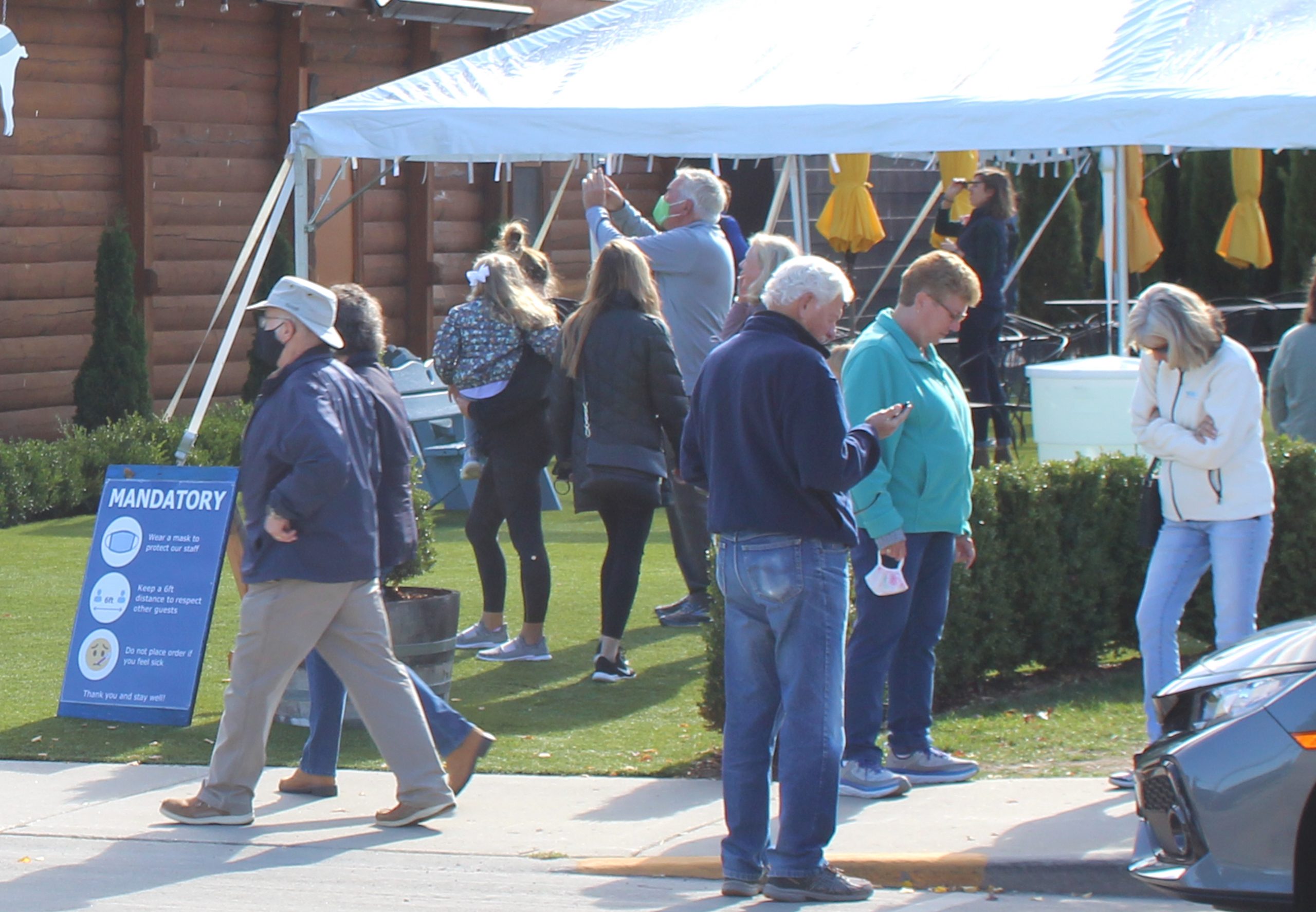With almost half of Door County’s population fully vaccinated against Covid-19, county Public Health officer Susan Powers said last week that she’s optimistic the county will be close to meeting its vaccination goals by early summer.
But she urged residents to have patience and continue practicing Covid-19 safety measures, cautioning that medium and large gatherings still are not safe for anyone and that relaxing safety measures too early could result in another surge of the disease.
Door County has been among the leaders in vaccination speed among all Wisconsin counties. It leads all counties with 58.3 percent of its population (16,129 people) having received at least one dose, according to state data. And it narrowly comes in second, to Bayfield County, when it comes to the percentage of people who have been fully vaccinated. That figure in Door County stands at 45.3 percent, or 12,533 people.
The county’s goal, which aligns with the state’s goal, is to get 80 percent of its population vaccinated, Powers said. The state Department of Health Services’s vaccination data notes that about 20 percent of Wisconsin’s population is under age 16 and therefore not currently eligible for any vaccine.
Door County also has seen a relatively high number of Covid-19 cases in recent weeks, including a significant rise in cases during the second half of March. Powers said she wasn’t sure what caused that spike.
Powers said the presence of variants of the virus that causes Covid-19 represents a “wild card” in the outlook for the pandemic in coming months. There are five variants that have been identified as being of concern by the Centers for Disease Control and Prevention, because they seem to spread more easily and quickly.
Three of those variants have been confirmed in Door County, Powers said. She added that she suspects all five are present in the county, noting that not all positive test samples for Covid-19 are further examined to determine whether they contain one of the variants of concern. All five variants of concern have been confirmed in Wisconsin.
Powers said she’s heard fatigue from residents and questions about when life can get back to normal.
“We’re still in the middle of a pandemic,” Powers said. “Right now there’s no such thing as a risk-free activity.”
It’s important that people continue wearing masks, practicing social distancing and following other safety measures as the county works toward its vaccination goals, Powers said.
“My biggest concern at this point is that we’re all getting impatient and that people are going to stop doing what we learned at the beginning … and before we can get the majority of the population vaccinated, we’re going to have many more cases,” she said.
Vaccination efforts move toward next phase
The county’s vaccination efforts now are shifting to focus on residents who might have a harder time getting the vaccine or who aren’t sure about it, Powers said.
Public Health has seen declining signups for its vaccination clinics in the past two weeks, she said, likely indicating that most people in the county who were highly interested in getting the vaccine have done so.
In the next two weeks, Public Health will transition from the large drive-through vaccination clinics it has been holding to smaller walk-up clinics, Powers said. The new clinics will have longer hours into the evenings, she said.
Public Health also has made efforts to reach northern parts of the county. It has held two clinics on Washington Island and has one planned in Sister Bay this Thursday.
Powers said the emergency services personnel who have staffed the drive-through clinics are shifting back to their regular work with the busy summer season starting. Public Health has hired a dozen limited term employee nurses to staff its clinics, Powers said, some of whom have come out of retirement.
As county health officials work to vaccinate remaining residents, Powers praised the work of the Door County Medical Center and the county’s Aging and Disability Resource Center. The Medical Center has begun holding on-site vaccination clinics at some of the county’s largest employers.
The ADRC is doing outreach to residents who have barriers to getting to a vaccination clinic, Powers said. For people who need transportation to a clinic, the county’s public transit service has secured grant funding to provide free rides, Powers said. Public Health nurses also have begun doing home visits to administer the vaccine to residents who need to stay in their homes.
Public Health officials also are considering how best to get young residents vaccinated, Powers said. That includes discussions about how best to reach 16- and 17-year-olds, she said. Only 23.2 percent of that age group in Door County has received at least one dose of a vaccine thus far, the lowest of any age group.
It also means beginning to think about vaccinating younger children, Powers said. A vaccine for people aged 12 and up is expected to be available in late summer or fall, she said.
There have been a significant number of new cases among young people in the past month, Powers said. Since March 20 in Door County, 29 percent of all new cases were among people ages 0 to 19, the most of any age group. That reflected a similar proportion of cases among young people statewide, Powers said. In Door County, that increase was due in part to an outbreak at a child care center, she said.
The age groups with the second largest percentage of cases in Door County – with 17 perent of all new cases each – were ages 30-39 and 40-49, Powers said, likely reflecting cases among children and their parents.
Summer outlook will depend on Covid activity level
Guidelines for Covid-19 safety this summer will depend on the disease’s activity level in the county at that time, as well as the positivity rate among new tests, vaccination percentages and the effects of the virus variants, Powers said.
Right now, she said, it is safe for fully vaccinated people to have small gatherings indoors – without masks – with other fully vaccinated people or people who are not at high risk for severe cases of the disease.
Fully vaccinated people also can travel without quarantining afterward, Powers said. And if a fully vaccinated person is exposed to Covid-19 but does not have symptoms, she said, they do not have to quarantine.
Public Health still recommends against holding any medium- or large-sized gathering, Powers said. That applies even for fully vaccinated people, and even in cases like festivals that are held outside, she said.
Powers said she also encourages people considering holding any kind of event to plan for the possibility that it could need to be canceled, and to set expectations that guests follow Covid-19 safety measures. Public Health offers an event planning guide on its website.
“If we can have some messaging around, ‘We want to plan for this to be a safe activity, and this is what we expect,’ that’s going to help us,” Powers said.

